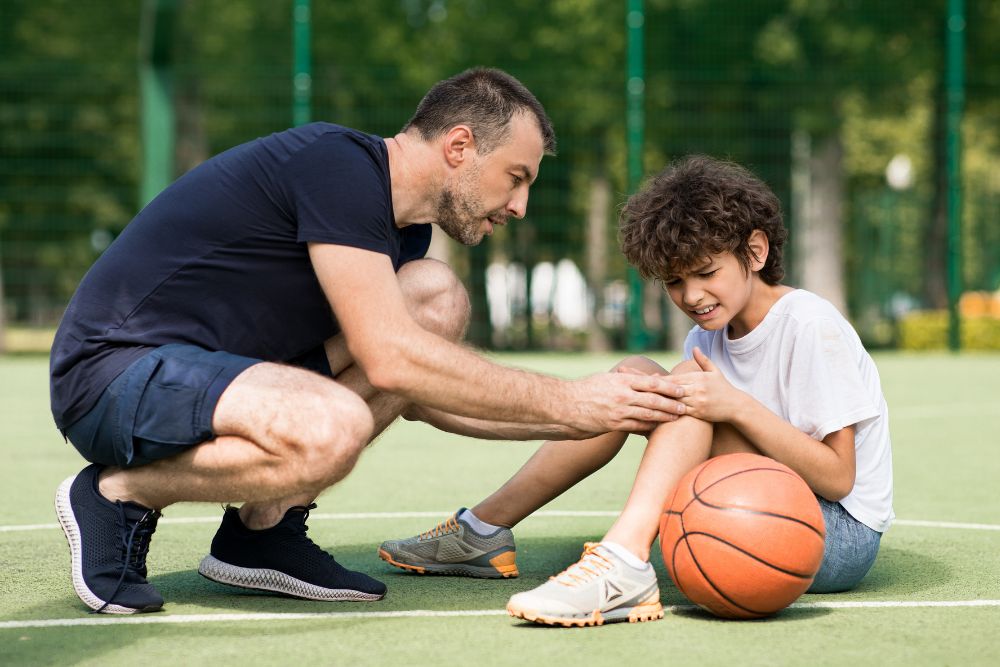Knee Injuries in Children: Understanding Pediatric Orthopedics
January 31st, 2024Pediatric OrthopedicsOrthoHC
The knee is our largest joint and among our most important, allowing movement, stability, flexibility, and strength. Knee injuries are common in children and adolescents, due to their energetic lifestyles and unique anatomy. Quick medical care is often necessary, especially as bones and joints may still be growing. A doctor specializing in pediatric orthopedic care can quickly recognize symptoms and provide treatment.
How Knee Anatomy Differs for Children
While children and adolescents have similar knee structures to adults, their bones and joints may still be growing until their late teens or early 20s. This can worsen injuries for a few reasons. As pediatric bones have more flexible cartilage, they can bend and not break, making treatment more difficult. Growing bones can also remodel and realign themselves, with fractures impacting normal growth and potentially causing deformities.
Typical Pediatric Knee Injuries
Fractures and dislocations of the kneecap (patella) are among the common pediatric knee injuries. Others include:
- Strains and sprains can affect children’s knees, targeting the connective tissue. A knee sprain occurs when its ligaments, the tough, flexible tissue bands connecting bones in a joint, tear or are stretched too far. Sprains can be caused by movement in any direction, like bending or twisting. A strain, or pulled muscle, involves an injury to a knee muscle or a tendon, the stringy tissue connecting muscles to bones. Strains may be acute, occurring from one event, or chronic, resulting from repetitive motions. Children and adolescents may suffer a tear in their anterior cruciate ligament (ACL), a serious lower-body injury affecting knee stability. Strains and sprains, if mild, often improve with home treatment. If serious, physical therapy and RICE (rest, ice, compression, elevation) may help.
- Tendonitis may develop if a tendon, tough, flexible tissue connecting muscle to bone, becomes irritated or inflamed from overuse or poor training. A common knee-related form is patellar tendonitis or jumper's knee. As the name suggests, this is often seen in sports involving jumping, like basketball.
- Meniscus tears involve damage to the menisci, the wedge-shaped cartilage pieces between the upper and lower leg bones acting as shock absorbers. Tears often occur when sharply rotating or twisting the knee when the joint is under strain. They may develop with sudden pivoting or stops, repetitive kneeling, or heavy lifting.
- Bursitis involves swelling of the fluid-filled sacs (bursa) that cushion knees and enable movement. Knee bursitis can occur from injuries or activities involving kneeling on hard surfaces.
- Osgood-Schlatter disease is a common condition causing pain and swelling below the knee joint, where the patellar tendon and the top of the shinbone meet. It’s often seen in activities involving a lot of jumping or running.
Why You Should See a Pediatric Orthopedic Specialist
Your child may be able to temporarily handle a knee injury, using home remedies like icing. For injuries that remain and disrupt their routine and sleep, a pediatric orthopedic specialist is recommended. These physicians and surgeons have the training and experience to diagnose and treat the full spectrum of knee injuries in children. They’ll begin appropriate treatments, like pain management, injections, and physical therapy, or orthopedic surgery, if necessary.
Become Familiar With Pediatric Knee Injuries
Knee injuries are common among children and adolescents, whether due to activity or general anatomy. To ensure proper healing, they require diagnosis and treatment by pediatric orthopedic specialists. If you suspect a pediatric knee injury, we invite you to schedule an appointment at The Orthopedic Health Center today. We have locations in Hoboken, Jersey City, and Bayonne, NJ.
Appointments available now.
